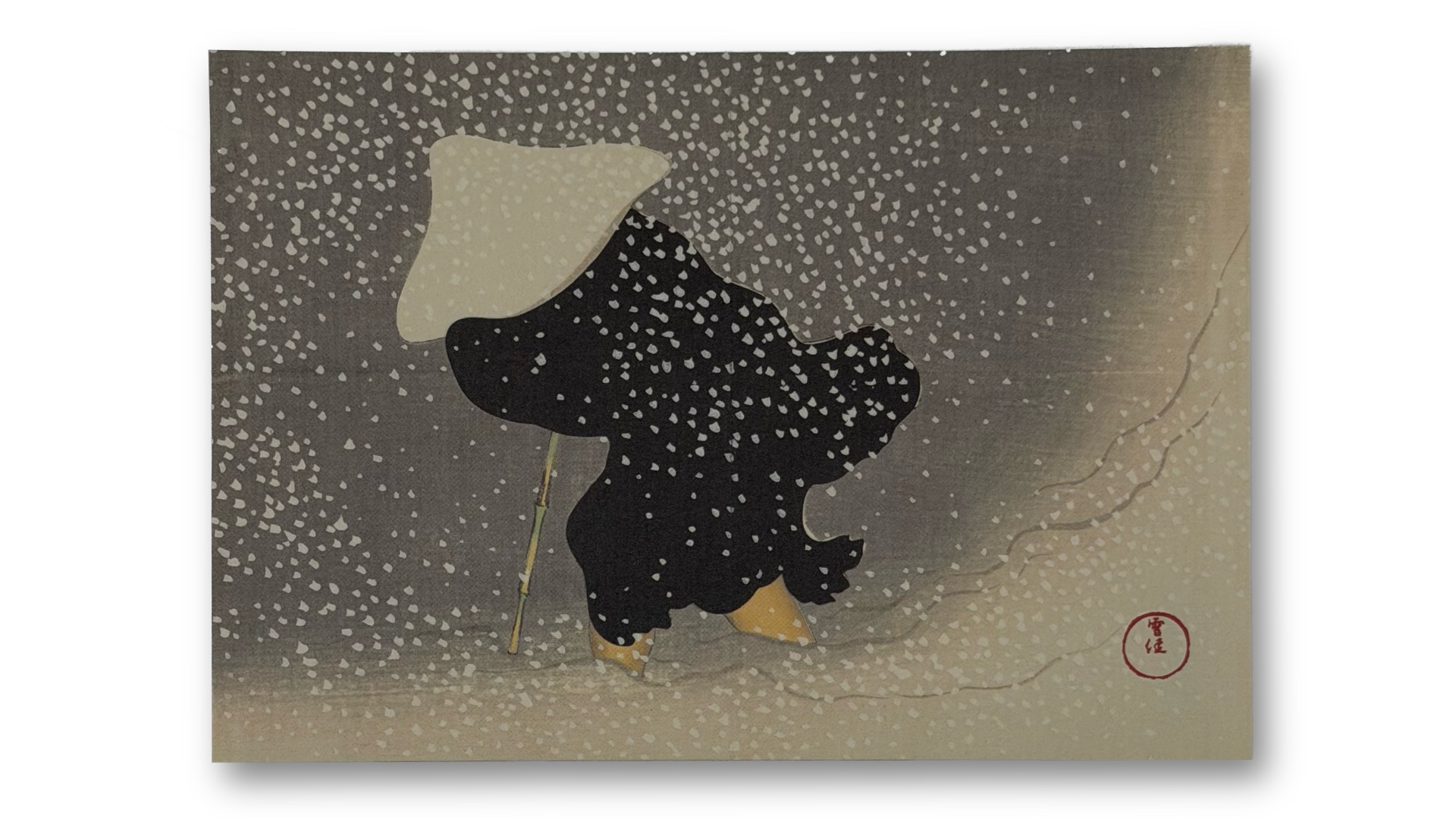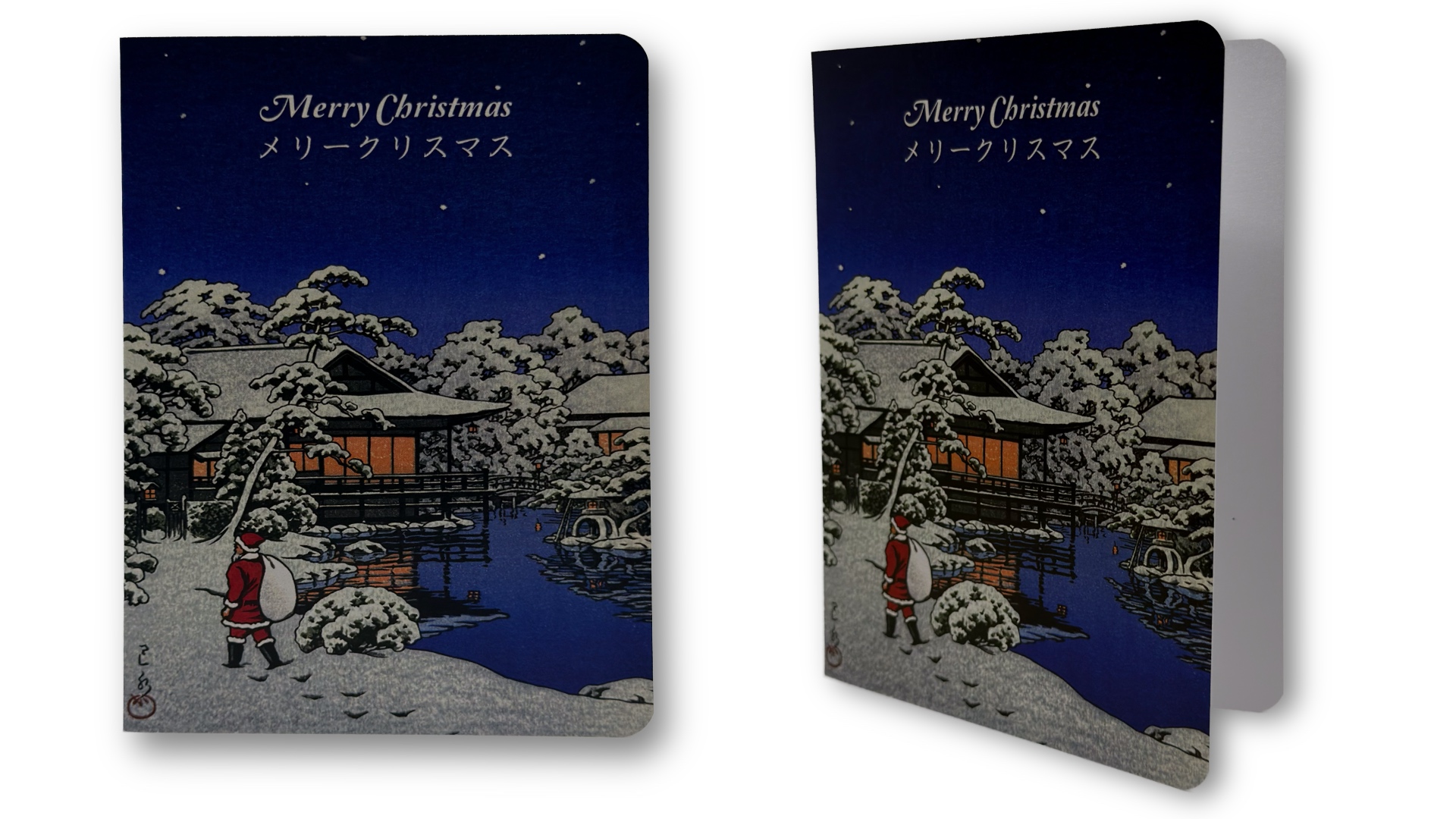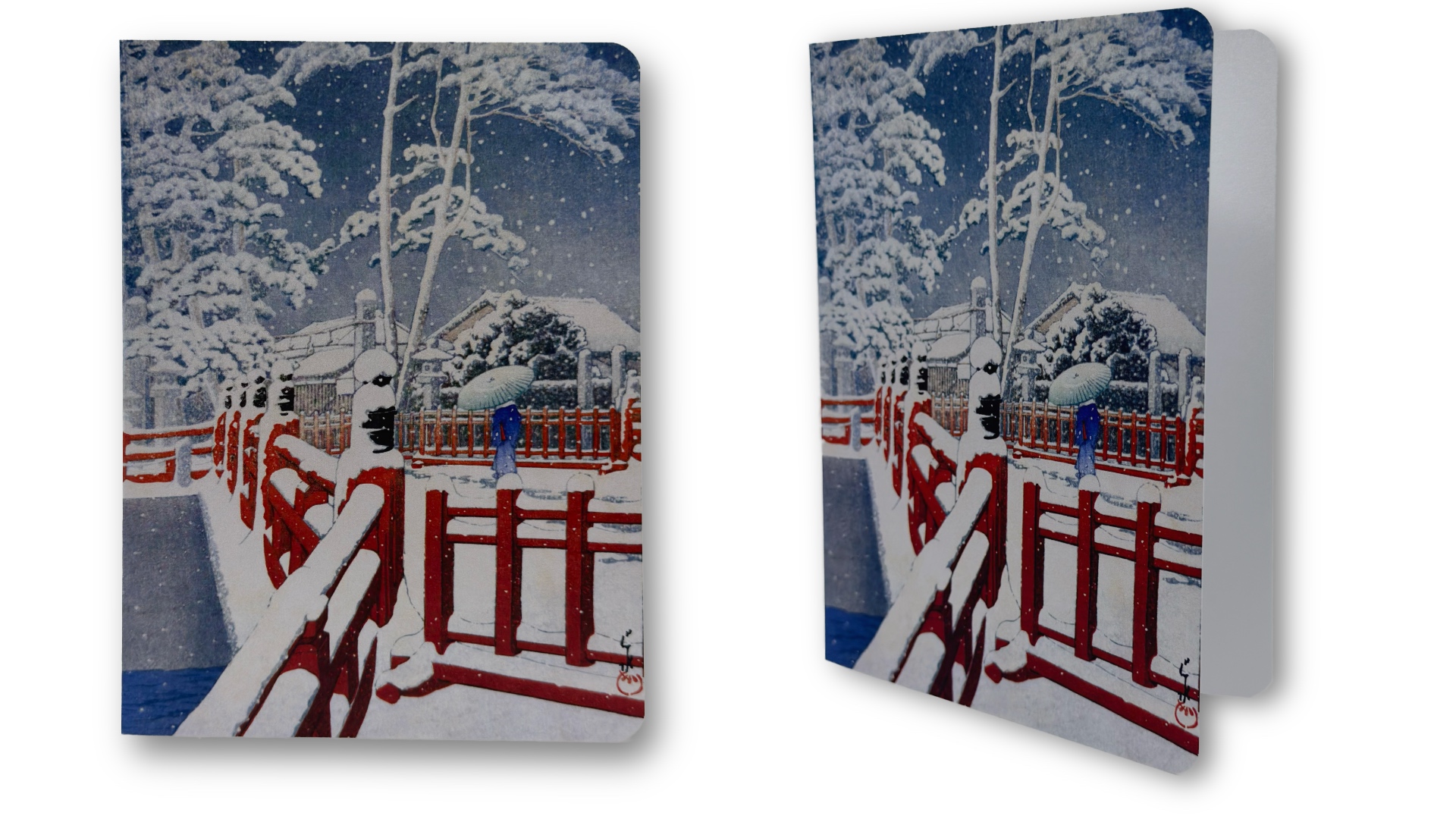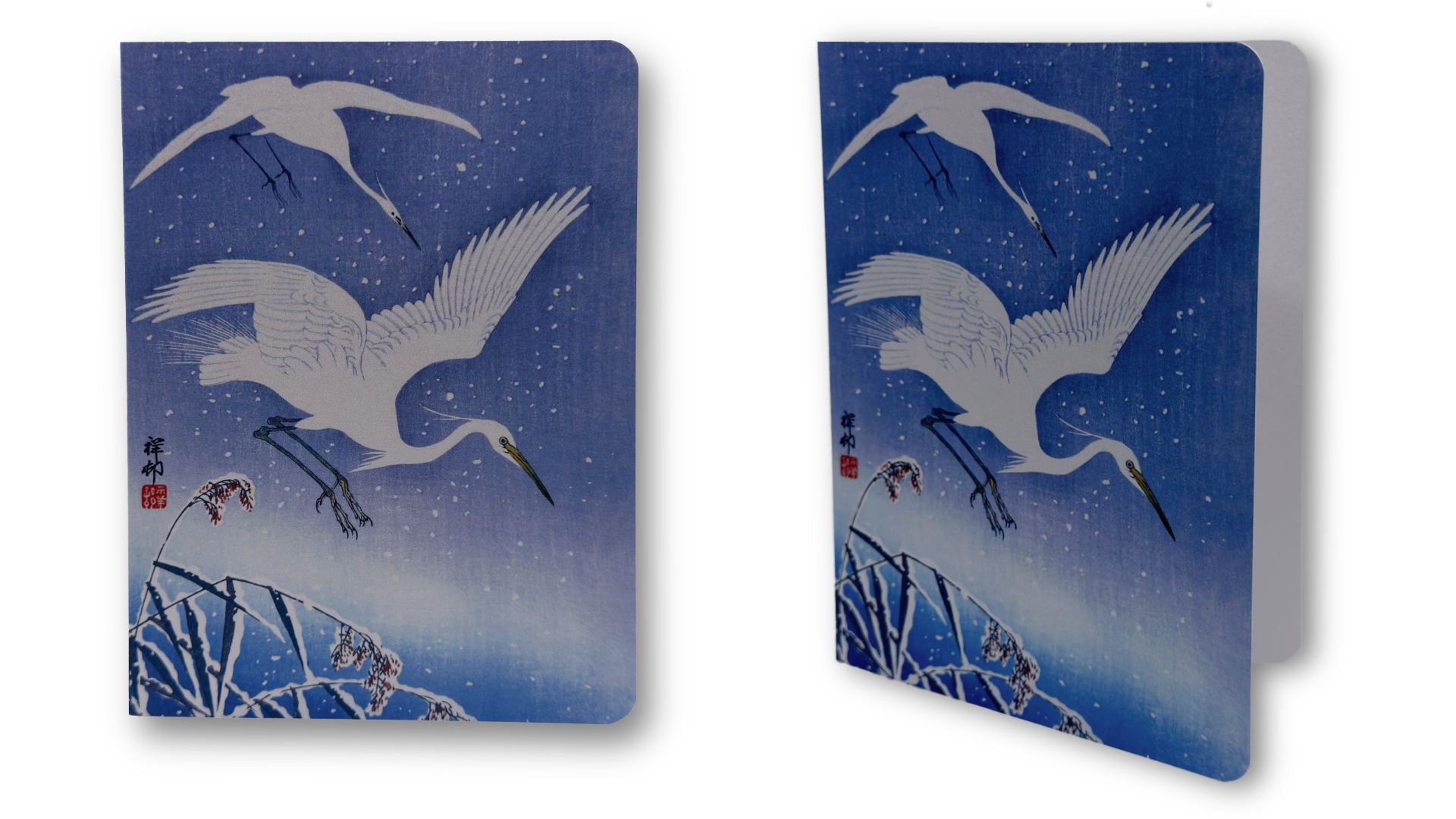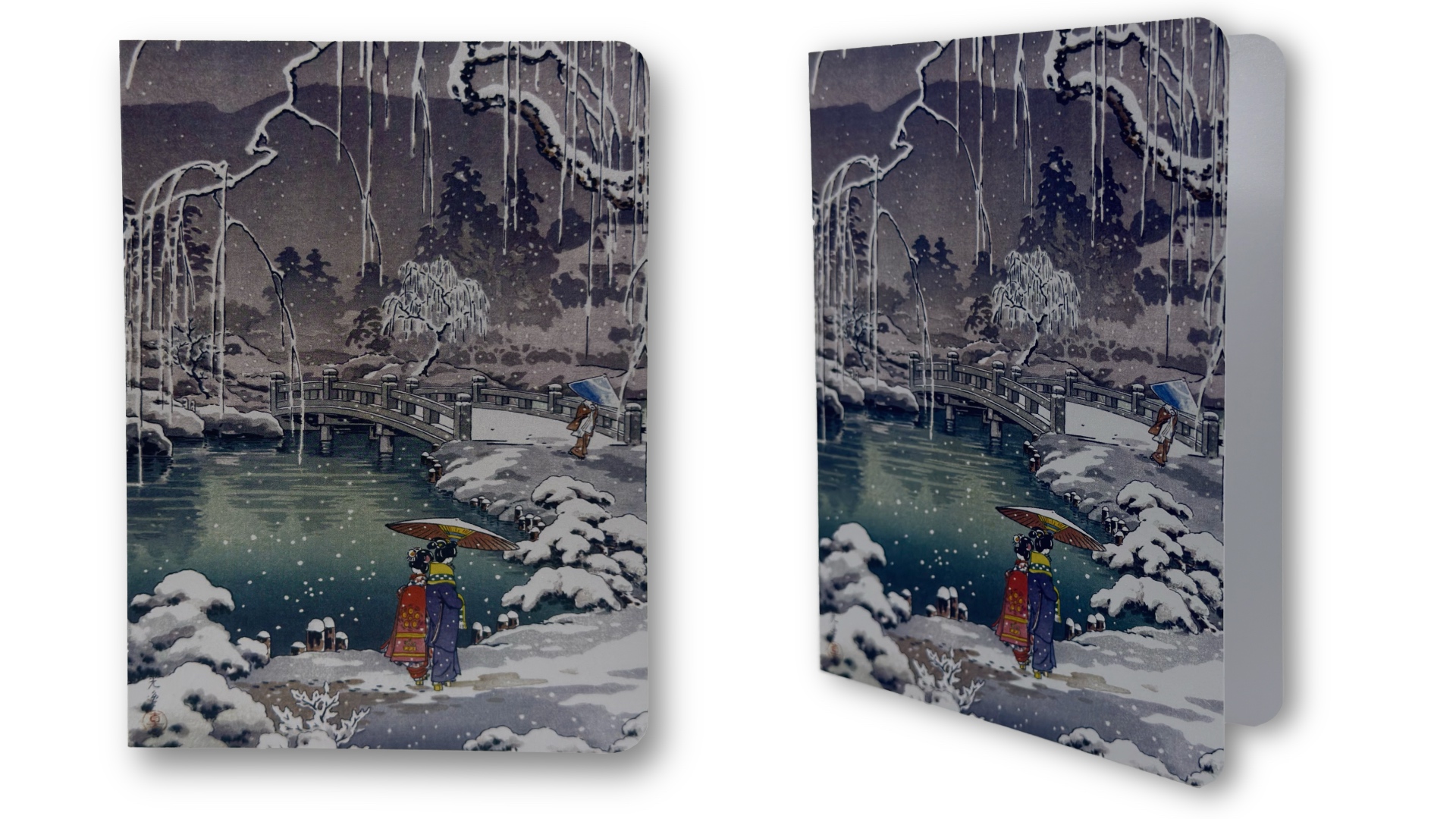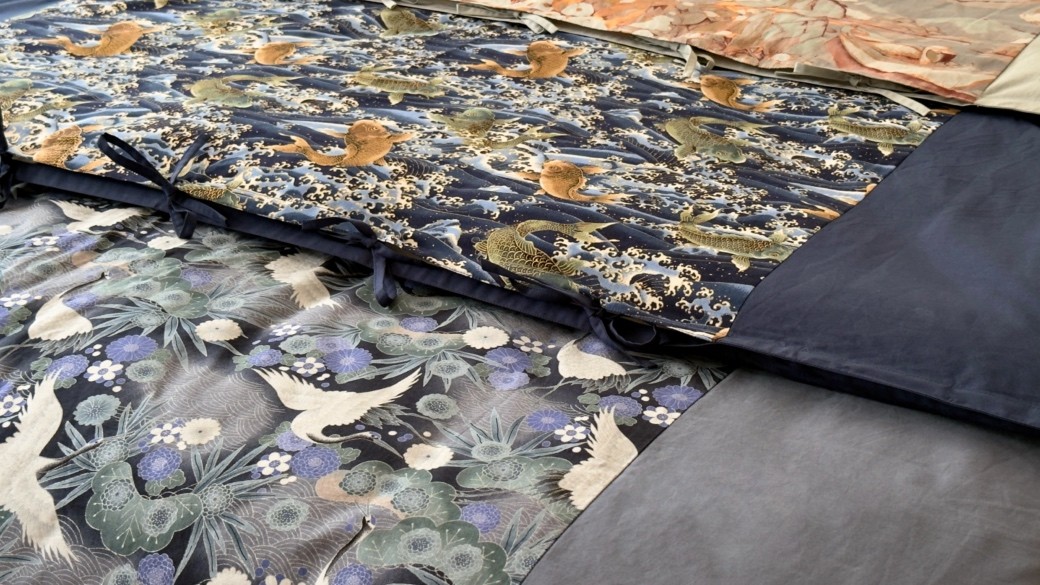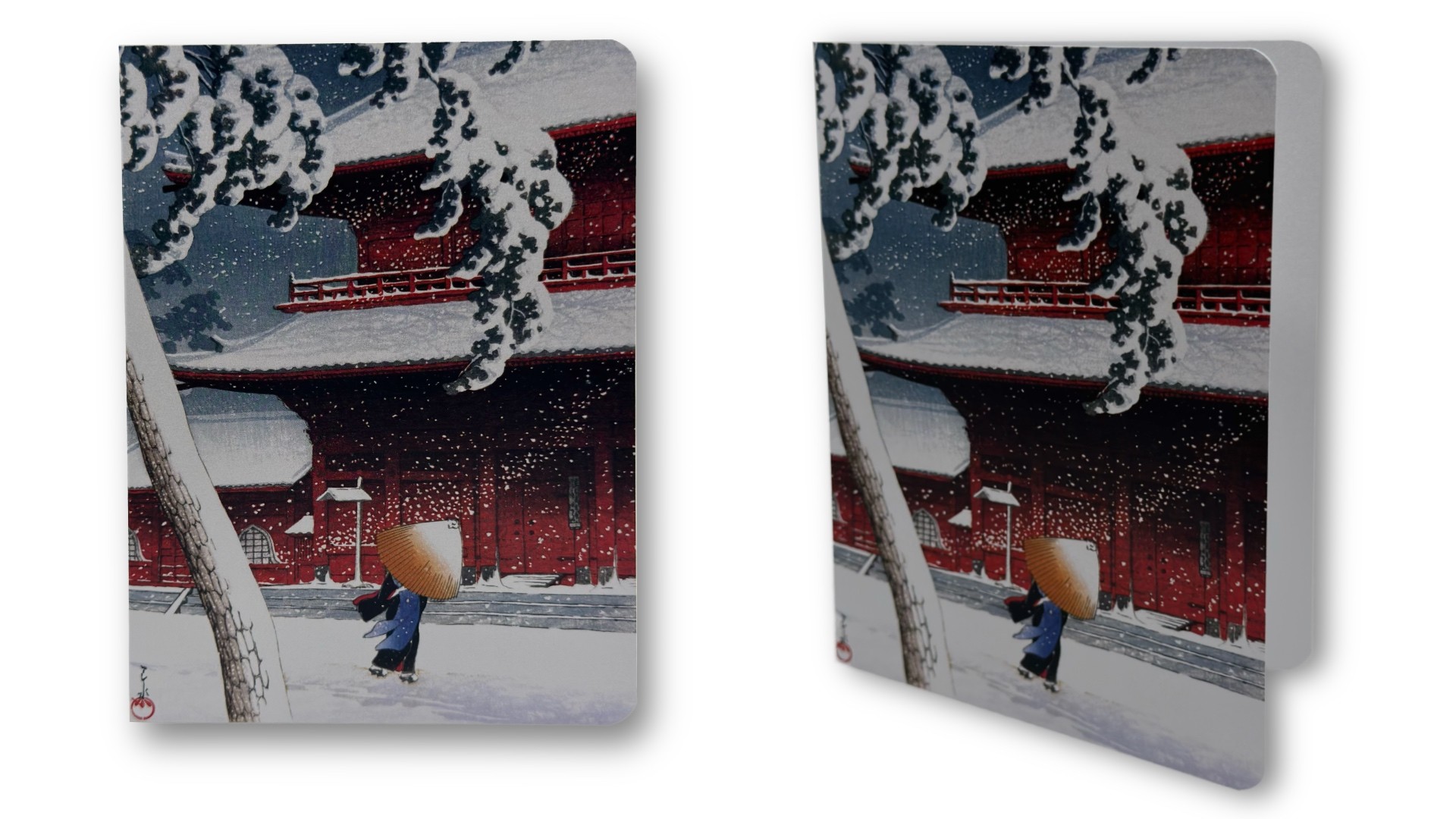
Silent Moments in Snow: Christmas Cards at Sato
At Sato, we offer greeting cards that capture the essence of Japanese winter in poetic ways: a snow-covered temple, a red bridge over still water, a snow-blanketed landscape garden, or a man braving a snowstorm. Many of these images come from the Shin-Hanga movement, whose artists reimagined traditional woodblock prints at the beginning of the 20th century.
These scenes capture more than just the poetic stillness of winter. In the foreground of Hasui Kawase's "Temple in Snow," a snow covered evergreen pine appears—a tree that has symbolized longevity, good fortune, and resilience in Japan for centuries. It's a story of constancy amid change. Similarly poetic are the "Egrets Descending in Snow," a motif expressing the inner strength, patience, and purity of these birds. In "Snow on the Bridge," the red bridge spanning the water represents the passage from the mundane to the sacred.
Santa Claus in a Japanese Garden
Particularly unique is Hasui Kawase's 1953 work "Santa Claus in a Snow Garden," depicting the Western Santa Claus in a snow-covered Japanese garden—an expression of that post-World War II era when global influences merged with Japanese traditions. A classic is Kamisaka Sekka's "Snow Whirl," a woodblock print showing a man in a straw hat pushing through a snowstorm—a poetic image of human perseverance.
Unlike Western Christmas cards that emphasize abundance and decoration, these motifs elegantly express winter's poetic stillness. They work beautifully as holiday greetings, congratulatory cards, or simply as display pieces—a quiet gesture of appreciation for Japanese art. A piece of Japanese winter poetry.
The postcard-sized cards (approximately A6) featured here are available directly at Sato's store at Ausstellungsstrasse 39 in Zurich.
